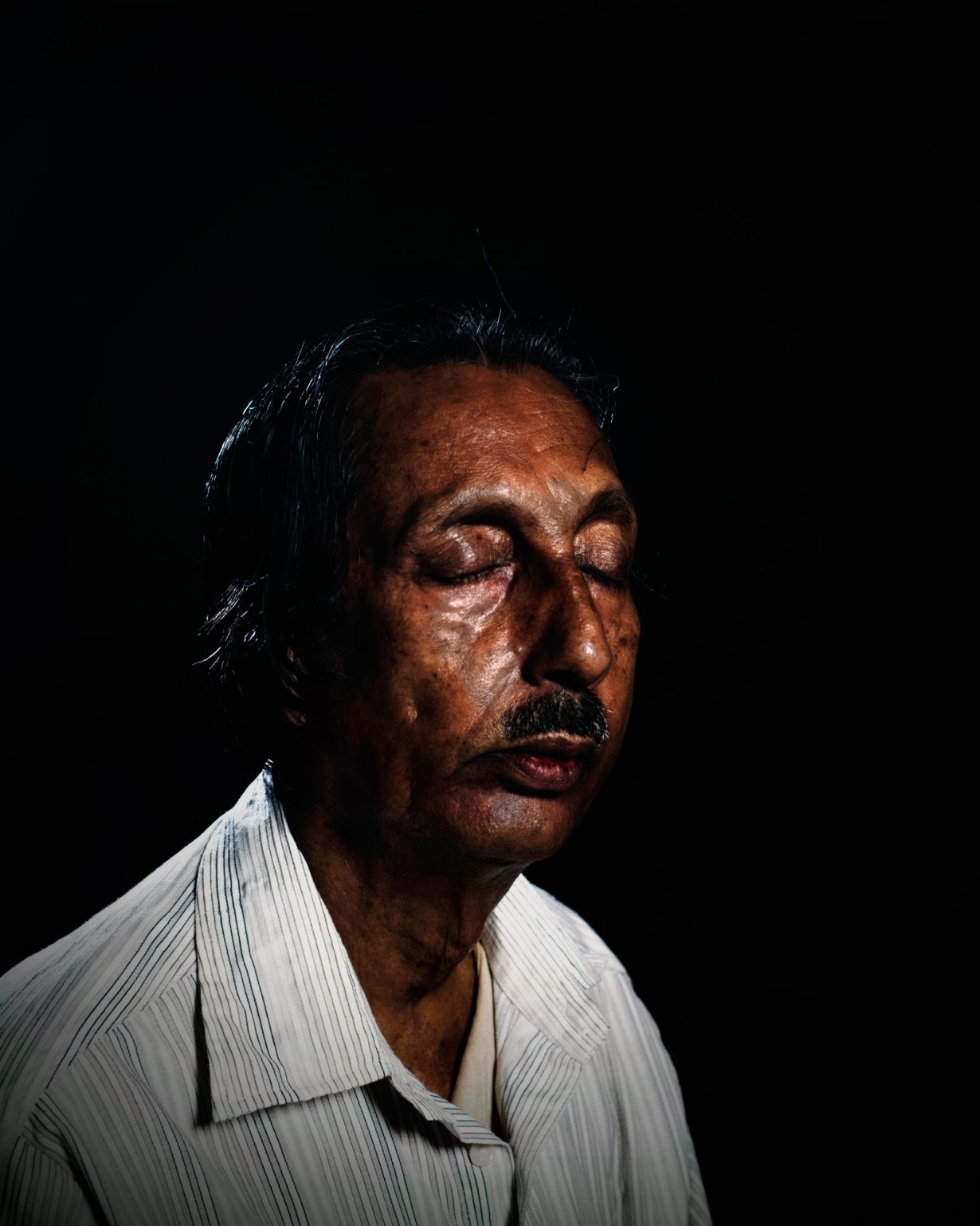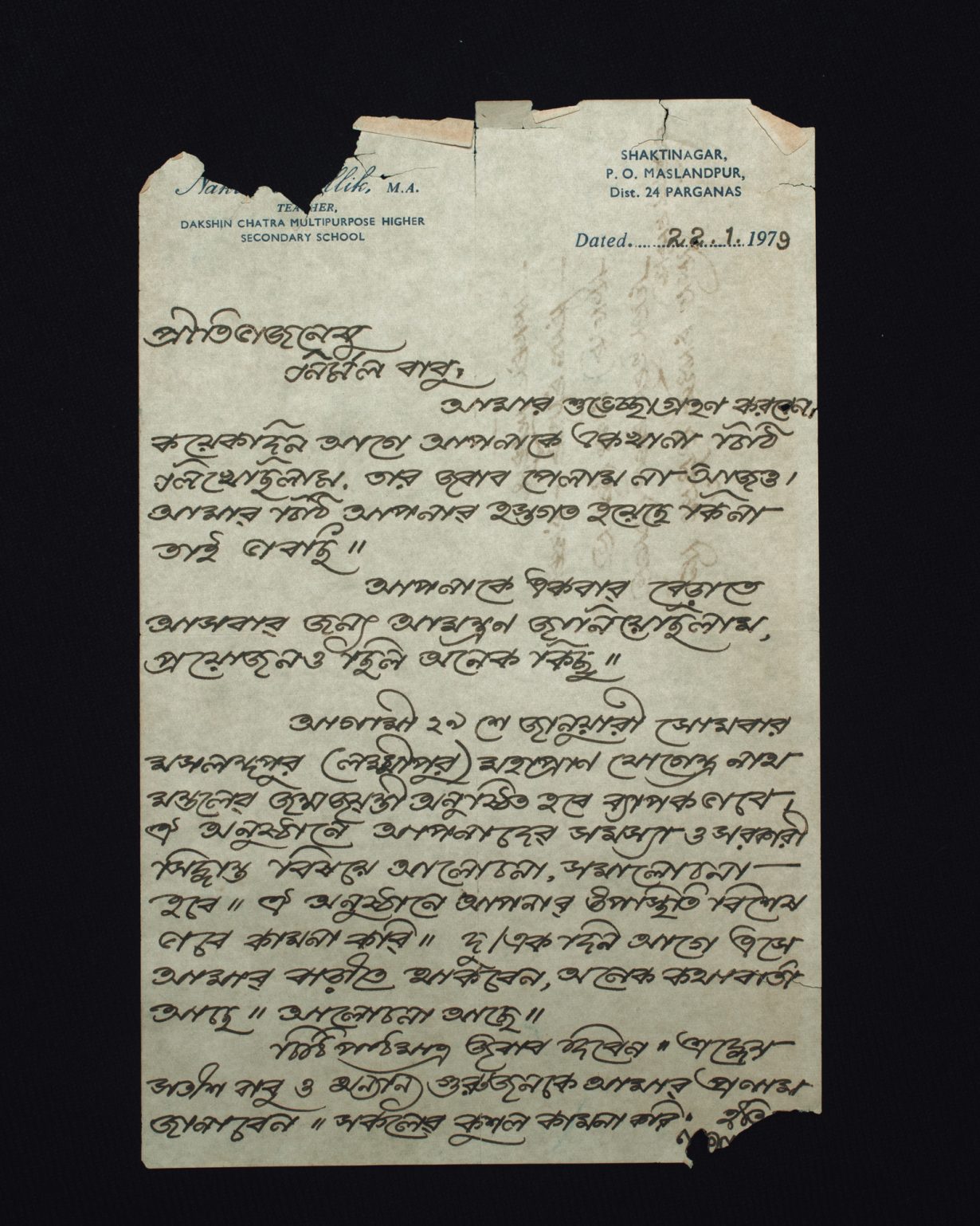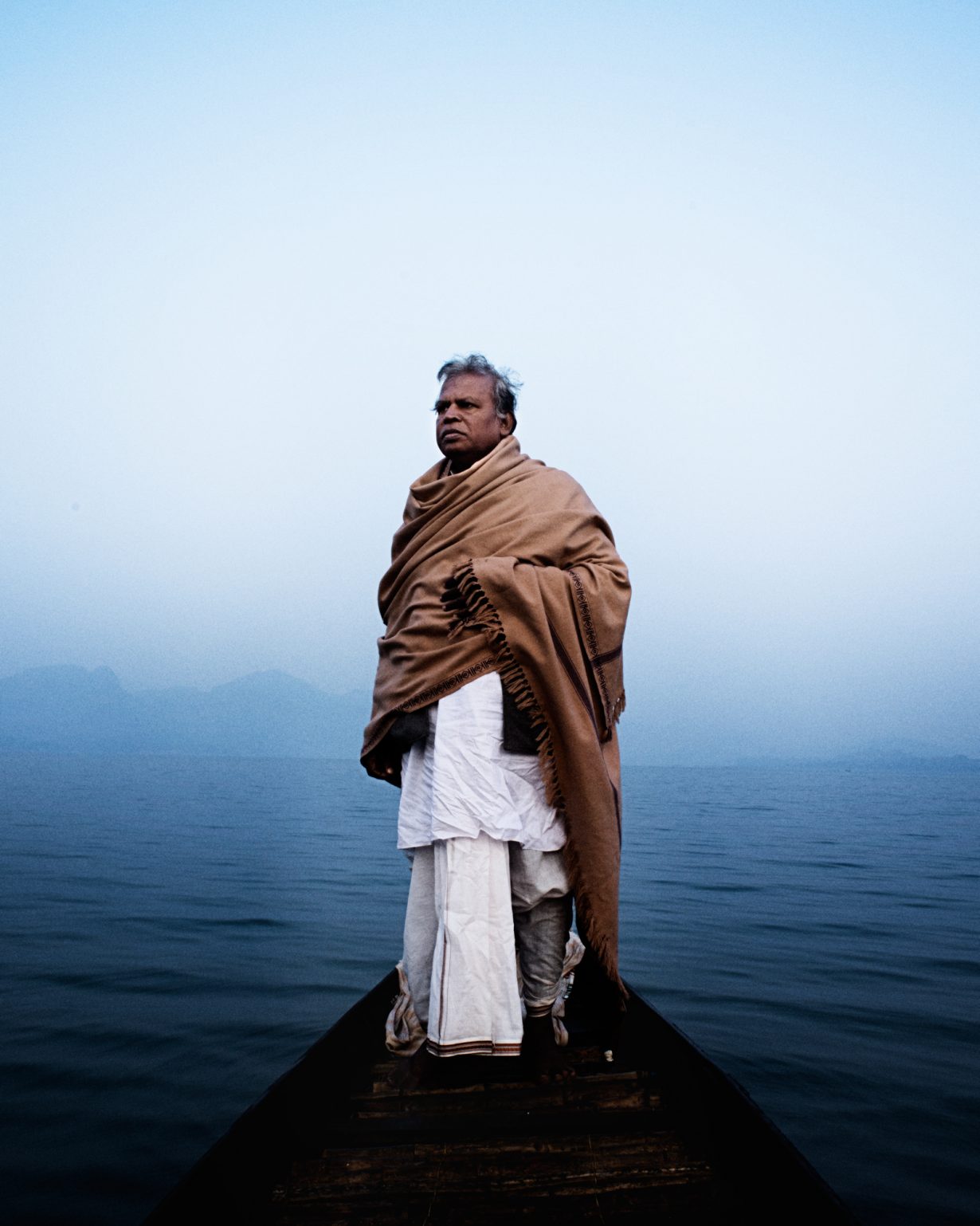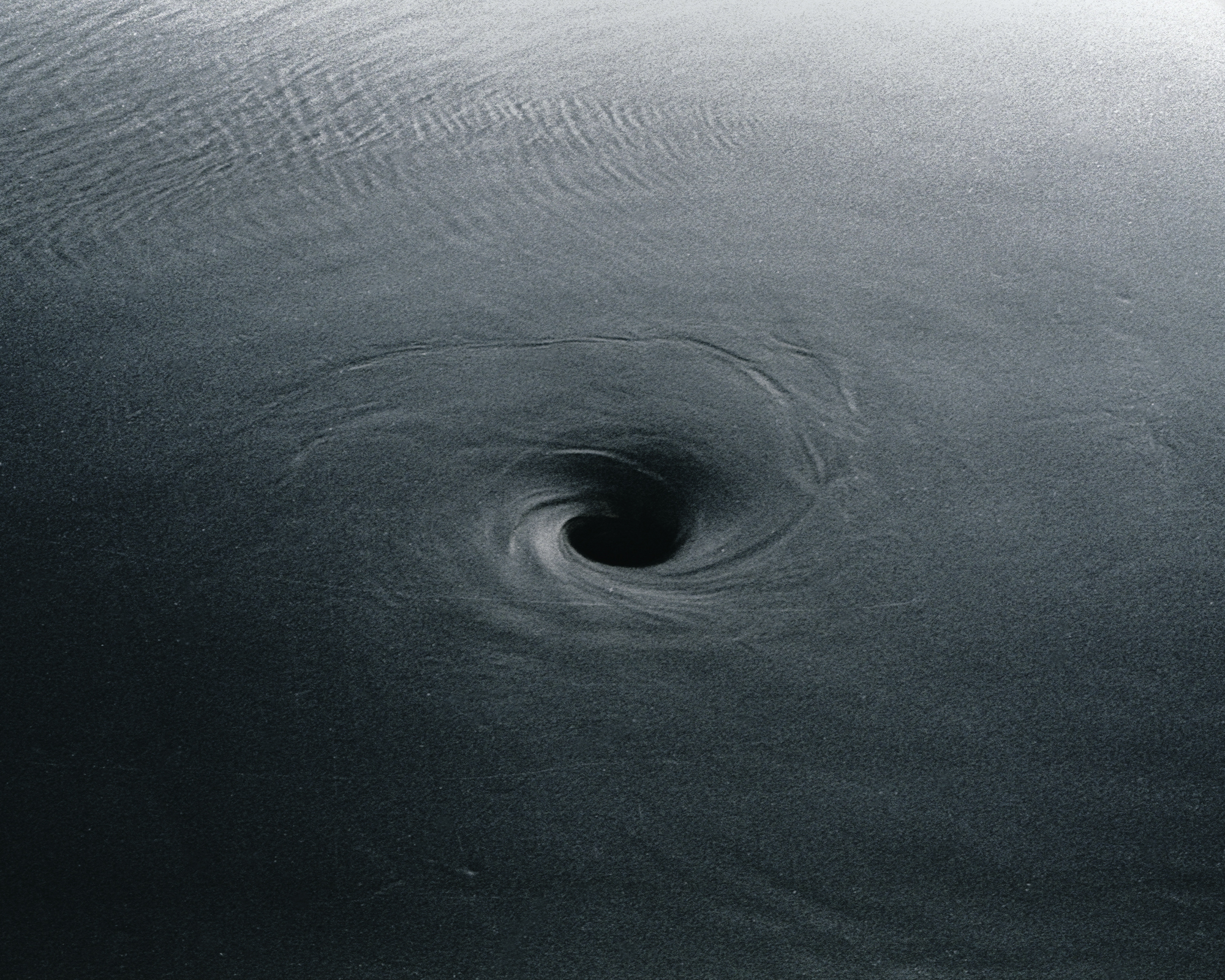The artist’s drive to collect information is premised on both a response to and fear of loss
What kind of life does a story contain in the absence of its teller? Does it cease to exist? Does it find voice through future generations? Do bodies of the past inherit spaces in the present? Do memories evolve and scars change shape? In Soumya Sankar Bose’s oeuvre, forgotten and unresolved histories are exhumed through creative reinterpretations in image, sound and video. Stories are released through substitute bodies that are located at a distance from the trauma that Bose excavates, which lends the narratives subjective appeal. Situated at a further remove from the concerned event yet invited to spectate its performative double, the viewer becomes a belated witness. In the artist’s ongoing multimedia series A Discreet Exit Through Darkness (2020–), an intimate, generational wound is laid bare.
Bose’s mother went missing as a nine-year-old in 1969 after she left her home on a casual stroll to a sweetshop. Three years passed before she turned up at her residence again, but with no memory of what had transpired during that time. The erasure is driven by a condition called prosopagnosia, and this temporal void has haunted the family ever since. In what should have been a formative time, Bose’s mother experienced something that has not yet been transcribed into words. In its unknowability, this period of time registers as a tabula rasa, a blank slate. Bose’s mother may have been sold into human trafficking when she went missing. Bose made this tangential connection while going through police diaries around missing children during that time, but could not find his mother’s reports to be able to confirm his conjecture. His mother does recall some details to this end, but remains unable (or reluctant) to share more.

Mounted on a wall in the Hindustan Road premises of Kolkata gallery Experimenter, a framed photograph shows a white circular screen that partly obscures two recognisably female children – one in a frock (considered a child’s garment) and the other in a sari (a garment for women). While one of their heads peeps out from behind the screen, the other remains a silhouette. The bodies are identical in their figurative likeness. An obverse of a black hole, the whiteness of the screen is a loud reminder of the cognitive excision attendant to the artist’s mother’s story. As performative surrogates for a lost childhood, the figures in the photograph inhabit the same person – they grew up and apart from each other overnight.
After exhibitions in Mumbai and Kolkata, A Discreet Exit Through Darkness was showcased at Les Rencontres d’Arles 2023 photography festival in the South of France. Winner of the Discovery Award supported by the Louis Roederer Foundation, the project was part of a show curated by Tanvi Mishra at the Église des Frères Prêcheurs, one of the festival’s signature sites. In this version of the exhibition, the artist delves into his family history, and supplements oral testimonies from family members with archival documents such as police records and images of children who went missing during the 1970s. The artist’s drive to collect information is premised on both a response to and fear of loss. Loss, in fact, becomes a current that charges the exhibition through both recall and repair.

Significantly, Bose ascribes the voice of the narrative to his maternal grandfather, who walks the audience through his own inner turmoil following his daughter’s unexplained disappearance. The narrator and his subject are both absent figures that shape the story through a single-channel, 360-degree feature-length virtual reality film (showcased only in the exhibitions mounted in India), which is experienced individually through a headset. As one progresses through the film, the artist’s grandfather (voiced by an actor) recalls his memories, drawing the audience’s imagination towards an expansive landscape that includes the house in Midnapore that the artist’s family inhabited during the late 1960s. In the beginning, the film plunges the viewer underwater and emulates the sensation of floating back to the surface once it ends. The story thus seems to take place in an aqueous nowhere, where dreams, nightmares, guilt, grief, brick and air collide in lyrical deference to the pervasive sense of loss.

Bose uses embodiment as both process and strategy. In his oeuvre, the original protagonist is displaced by a stand-in who communicates the story while maintaining a judicious distance from the associated trauma. He does this with ethical concern for the survivor(s), as a direct testimony carries the risk of retraumatisation. Even when working with archival documentation such as police reports or photographs of family members, Bose makes artistic interventions (such as scanning the images in negative formats and scratching out vulnerable faces in digital renderings of the photographs) in keeping with this objective. Bose is therefore hesitant to use the word ‘staged’ for the images he creates, as it implies the existence of an indexical referent. Here, it is absentia that is ascribed flesh through contemporary referents, essentially creating what he calls an ‘alternative archive’ of an ephemeral event. For example, in the version of this exhibition mounted in Kolkata, four photographs are placed in tandem to record a recumbent body moving in and out of the frame – a motion made all the more obscure by thickets of foliage. Bose’s grandfather is remembered to have passed out often near a well while he was in the throes of alcoholism. (That addiction eventually led to his demise, which tragically happened before his daughter returned.) Set against conditions that draw from the visual vocabulary of plural retellings, the photographs capture the inconsistency of his presence through strategic juxtaposition.
This is also reflected in Bose’s previous body of work, Where the Birds Never Sing (2017–20), for which he photographed actors embodying the survivors of the Marichjhapi massacre, where several thousand Dalit refugees were purportedly killed by the Left Front in the eponymous region in West Bengal in 1979. Engineered by the then government, the violent event is absent from institutional records. Bose turned to the survivors, collecting oral testimonies to craft a series of images in both remembrance of and reverence to their trauma. In the resulting photobook, Bose photographed dramatised reenactments of the anecdotes he had recorded during his research. Bodies, sites and colour come together to create composite reimaginings of the massacre that counter (and condemn) their erasure from administrative records. His photographic work on Jatra performers in Bengal (Let’s Sing an Old Song, 2011–15) as well as queer bodies (Full Moon on a Dark Night, 2015–) took similar routes in reaffirming identity through performative substitution. Bose is consistently sensitive to questions of identity and its visibility. In A Discreet Exit Through Darkness (in all its iterations), his mother remains protected as a person despite being hypervisible as subject.

Interestingly, Bose uses mediatic hauntings as a methodology to review the past in this exhibition. He places technology at the centre of this reparative approach to dealing with institutional omissions. Bose kept a diary during his research process in which he noted down hypothetical thoughts in the voice of his grandfather, which are later translated to the VR film in a measured yet affective narration of pathos. The immersive experience is designed to enable an incomplete grasp of the story by the viewer (as diegetic events exceed the periphery of human vision), in kinship with the family’s fragmented perception of it. A series of radio broadcasts in the film’s soundtrack rehearses the gamut of political events around the time, highlighting the cohabitation of logic and superstition in a newly independent nation. Towards the end of the film, a scene focuses on a small television that plays moving footage of real family events surrounding birth and death, becoming an archive in retrospect. A range of media then frames the family’s experiences, as they breathe through expanded public events that play out alongside their own.


Over a remote conversation, Bose talks to me about how the figure of the ghost in the Indian subcontinent constitutes a para-archive of sociopolitical anxieties; it is suppressed history resurfacing as spectre. Embedded in vernacular cultural memories, ghosts become carriers of lived histories that are occluded or denied by official accounts. Bose’s grandmother was much younger than her husband when he passed away, and she has fantasised about this absent figure for decades since, the artist says. Representative of a time when widows were socially obligated to harbour this absence for the rest of their lives, Bose’s grandfather’s entity kept accumulating as memory. Bose talks about endearing moments from his research period when his grandmother would only divulge something of her past (involving her husband’s search for their daughter) to him if he got her sweets or chanachur (a savoury snack) in exchange. She is the only living link to what her husband went through during the three years that their daughter was missing. The artist’s sustained attempt at detangling a temporal knot that has afflicted his family is thereby enabled through innocuous transactions. He admits that some of her stories may have been improved, embellished, revised or entirely fabricated – attesting to the fallible nature of memory itself. Bose assimilates these exaggerations in his images as much as he absorbs the folklores around his grandfather’s persistent ghost roaming where their house once stood (perhaps still in pursuit of his daughter). His photographs and film then assume the quality of a dream – one that fiercely resists resolution.

Bose is currently working on the second chapter of this project, which seeks to look at the same story but through his mother’s lens. The same events would be looked at anew, and a different set of experiential coordinates may emerge in these interactions. The artist talks about how his mother was sceptical of public reactions to her story while this exhibition was shaping up, afraid that she would be judged for her predicament. Eventually, the artist informs me, she felt reassured by the more nuanced reactions of audiences – although he also took care to protect her from potential scrutiny. Interested in what is ‘missing’ from the story, Bose’s work is predicated on a curiosity for answers. Reassembling history through material fragments and oral narratives, he crafts work that attests to both the transient nature of memory and the power it holds over the present. In this exhibition, he literalises imprints and trails through a haunting topography, using fiction to bolster fact. What emerges through this osmosis is a palimpsest of memories and anecdotes narrated under the gentle gaze of a filial storyteller.
